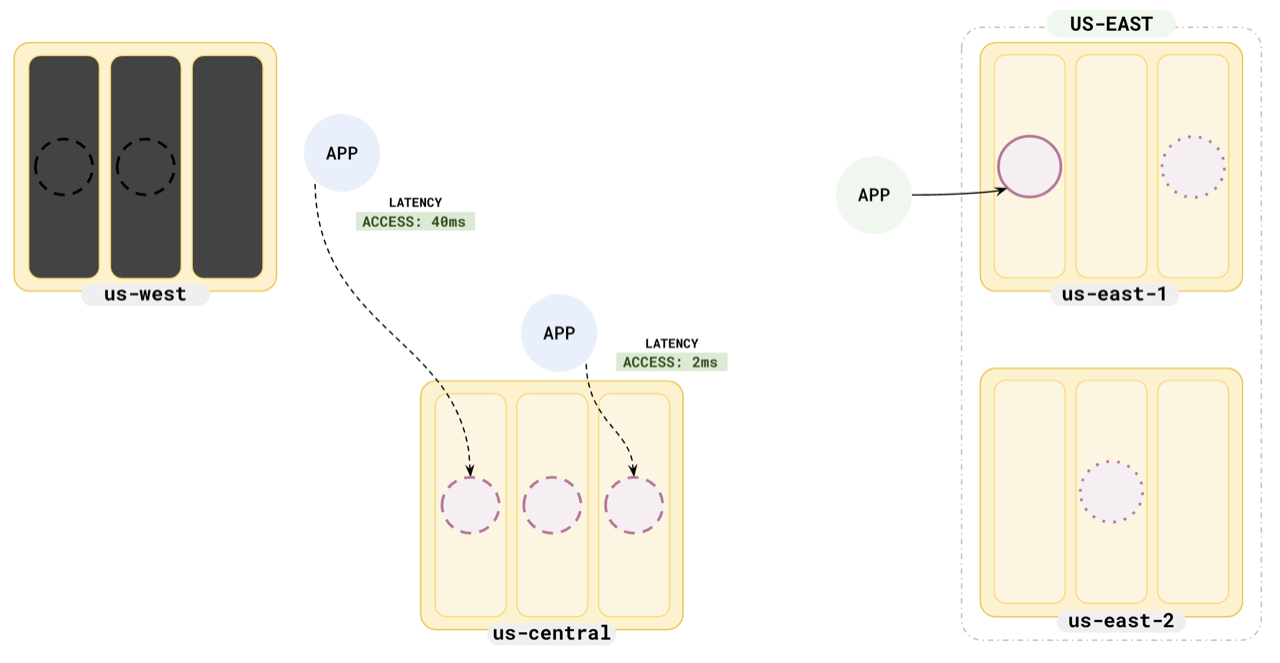Read replicas
For a highly available system, it is typical to opt for a Global database that spans multiple regions with preferred leaders set to a specific region. This is great for applications that are running in that region as all the reads would go to the leader located locally.
But applications running in other regions would incur cross-region latency to read the latest data from the leader. If a little staleness for reads is acceptable for applications running in the other regions, then Read Replicas is the pattern to adopt.
A read replica cluster is a set of follower nodes connected to a primary cluster. These are purely observer nodes, which means that they don't take part in the Raft consensus and elections. This also means that read replicas can have a different replication factor (RF) from the primary cluster, and the RF can be an even number.
Setup
Setup
To set up a local universe, refer to Set up a local YugabyteDB universe.Setup
To set up a cluster, refer to Set up a YugabyteDB Aeon cluster.Setup
To set up a universe, refer to Set up a YugabyteDB Anywhere universe.Suppose you have a replication factor 3 cluster set up in us-east-1 and us-east-2, with leader preference set to us-east-1, and you want to run other applications in us-central and us-west. The read latencies would be similar to the following illustration.

Improve read latencies
To improve read latencies for applications where a little staleness is acceptable, you can set up read replica clusters in each of the regions where you want to run your application. This enables the application to read data from the closest replica instead of going cross-region to the tablet leaders.

Notice that the read latency for the application in us-west has drastically dropped to 2 ms from the initial 60 ms and the read latency of the application in us-central has also dropped to 2 ms.
As replicas may not be up to date (by design), this might return slightly stale data (default: 30s).
Failover
When the read replicas in a region fail, the application redirects its reads to the next closest read replica or leader.

Notice how the application in us-west reads from the follower in us-central when the read replicas in us-west fail. The read latency is 40 ms, still much less than the original 60 ms.
Example scenario
Applications in multiple geographies
Suppose that you have applications in three geographies, say us, eu, and sg. You could set up a global database that spans the three geographies, and set preferred leaders to one geography where you have the most users (say eu). But this means that all application writes have to be replicated to at least one other geography (other than eu). This could lead to increased write latency, although applications in other geographies could use follower reads to read slightly stale data with reduced latency.
In this scenario, you could consider setting up your global database in eu, and add separate read replica clusters in us and sg. This would ensure low latency for writes as replication happens in the same geography and at the same time, data will be replicated quickly to the read replica clusters ensuring low read latency for users in us and sg.